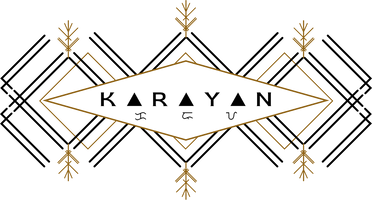Datu Waway Saway

Datu Waway Saway is an international artist from the Talaandig community of Sungco, Lantapan Bukidnon. The Talaandig culture is well known for their artistry in the performing arts and in soil painting. He has led his community by using art to educate the youth.
Son of Talaandig supreme chieftain Datu Kinulintang—a famous arbiter and peacemaker—Waway was born into a family of 17, his father having had three wives. And unlike many indigenous children, Waway went to college in the prestigious Xavier University in Cagayan de Oro and took up Agriculture. Pretty soon, his artistic inclinations would bring him out of the academe and into the university of life.
In the early 90s Waway joined a band of bohemian musicians and craftsmen wrapped in stone and bead ornaments. The group travelled to Manila and Boracay playing "world music," which, to Waway, sounded like the music of his own indigenous community. At about that time, too, indigenous-inspired apparel and jewelry were becoming fashionable. Realizing that people around him appreciated indigenous art more than he did, Waway decided he needed to go home to re-discover his tribe. And so after a brief sojourn with the travelling troupe, Waway packed his bags and instruments and trekked back to his mountain community.
Waway Linsahay Saway (Christian name: Rodelio), is a byword among contemporary artists and indigenous communities in Mindanao. A teacher at the Talaandig School of Living Traditions in the highlands of Sungko, Lantapan, Bukidnon, Waway lives on his tribe's music and art. With a group of artists well established in Songco and with many young Talaandig eager to follow his footsteps, Waway takes his passion for the arts to a different level. He is now working toward the discovery and documentation of Bukidnon traditional arts outside his tribe and teaching the art he knows to other indigenous youth.
"In my engagement with various groups of young people, more particularly those here in Bukidnon, I observed that the youth want attention as they are KSP – kulang sa pansin (wanting attention). However, to be noticed, they sometimes resort to negative or illegal acts, like vandalism. They write on walls to be able to express themselves because they do not have other venues. Some of them get a “high” and joy in the fact that they get caught as they are spoken of in news and in their community. Sikat sila, napag-uusapan (they gain fame as they are talked about), and they get the “attention” they want. It is such a negative approach for getting attention. I figured, why not give them a venue, a “canvas” for them to express themselves and be noticed not for their bad acts, but for the beautiful painting or music they will create?"
"I’ve seen the joy in getting “positive” attention, with my group mates before, such as with Balugto. Balugto is another Talaandig soil painter who was not able to finish elementary schooling. He is now known in the art world in Mindanao and his works have sold abroad. He gained popularity not by mischievous acts but because of art. (Balugto is Waway’s friend and colleague and can be considered one of Waway’s past trainees.)"
He re-learned his tribe's art, customs, and traditions, and found out that the Talaandig have long been fighting to reclaim their ancestral domain and cultural integrity. His brother, Datu "Vic" Migketay Saway, now the supreme chieftain of the tribe, was a prestigious leader known among indigenous networks, NGOs, and government agencies. He was instrumental in the setting up of the Talaandig School of Living Traditions (SLT). Soon word got out that this little Talaandig community led by Datu Vic Saway kept most of their artistic traditions alive through the SLT. Invitations for performances poured in, and Waway, backed up by a formidable urban experience, led the Talaandig artists to the outside world, along with Bae Magila, the tribe's dance teacher.
His home in Sungko is also home to many "outsiders"; several have come all the way from Europe to visit the community musician who is also a great storyteller. His stories and his amazing sense of humor drew many artists, journalists, and cultural workers to the small Talaandig community.
Waway is also known for inventing his own instrument called the "tambuleleng."
NY Fashion Week 2022




